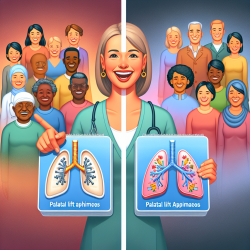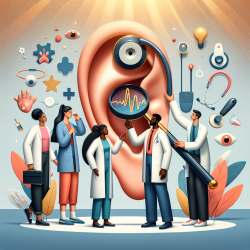As a Special Education Director with a vested interest in the latest advancements in therapeutic interventions for students with speech impairments, I recently delved into an enlightening study that sheds light on the benefits of palatal lift appliances for individuals with dysarthria. The research titled "Pulmonary Function Characteristics of Selected Individuals with Dysarthria: The Effects of a Palatal Lift Appliance" by Herbert A. Leeper, Jr., Dildar Ahmad, Paul S. Sills, and Anna Gallie, offers valuable insights that can significantly enhance the practice of speech-language pathologists and educators alike.
Dysarthria, a motor speech disorder resulting from neurological injury, affects the muscular control of speech mechanisms, leading to challenges such as weak phonation, articulation errors, and reduced speech intelligibility. Traditional interventions focus on improving articulation and phonation through various therapeutic exercises. However, this study introduces an innovative approach—using a palatal lift appliance to address velopharyngeal incompetence, a condition often observed in individuals with dysarthria, characterized by inadequate closure of the gap between the soft palate and the back of the throat during speech.
The study meticulously documents the pulmonary function and speech improvements in two patients fitted with palatal lift appliances. The findings are compelling, showing notable enhancements in speech intelligibility, articulation precision, and a reduction in hypernasality post-appliance fitting. Furthermore, the research highlights an intriguing aspect of the palatal lift's impact: improved pulmonary function during both speech and non-speech activities.
For practitioners and educators, these findings underscore the importance of a multidisciplinary approach to treating speech disorders. Incorporating dental and respiratory assessments into the diagnostic process can uncover underlying issues contributing to speech difficulties, thereby enabling a more comprehensive treatment plan. The study demonstrates that by addressing the mechanical aspects of speech production, such as airflow and pressure, with a palatal lift appliance, patients can achieve significant improvements in speech clarity and effort.
Implementing the outcomes of this research into practice involves a collaborative effort among speech-language pathologists, dentists specializing in orofacial disorders, and respiratory therapists. For students with dysarthria, an initial assessment should include a thorough examination of velopharyngeal function to determine the suitability of a palatal lift appliance. Following the fitting, ongoing therapy should aim to maximize the benefits of the appliance, focusing on exercises that enhance articulation, phonation, and respiratory control.
Encouraging further research in this area is crucial. While the study provides a solid foundation, exploring the long-term effects of palatal lift appliances, their impact on different types of dysarthria, and the potential for integrating technology to customize appliances could offer new avenues for improving speech therapy outcomes.
In conclusion, the study "Pulmonary Function Characteristics of Selected Individuals with Dysarthria: The Effects of a Palatal Lift Appliance" presents a promising intervention for enhancing speech intelligibility and respiratory function in individuals with dysarthria. As educators and therapists, embracing these findings and incorporating them into our practice can significantly improve the quality of life for our students with speech impairments. For those interested in exploring this research further and understanding its implications in depth, I highly recommend reading the original research paper.
To read the original research paper, please follow this link: Pulmonary Function Characteristics of Selected Individuals with Dysarthria: The Effects of a Palatal Lift Appliance.










